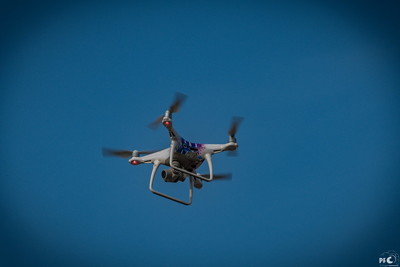
It isn’t always easy to get tickets to the most popular football matches. Whilst some teams such as Wigan Athletic, Huddersfield Town and Everton will always have tickets available, the most successful and popular clubs at the top end of the Premier League tend to sell out the majority of their games.
That leads some people to try to find any method possible to watch the team that they love play football matches, up to and including using illegal streams online to watch coverage of the games broadcast in the likes of America and the Far East.
Yet are there other ways of getting eyes on a football match that people have considered? Are there, for example, any rules in place on flying over a stadium whilst a game is being played and watching the events play out from the perspective of a bird soaring above the pitch? If so, what are these rules? If not, why don’t more people take to the skies in order to see how a match is developing?
On the one hand it might seem like a ridiculous thing to even attempt, yet on the other the development of technology nowadays, such as relatively cheap drones, means it’s not quite so ridiculous.
What Are The Rules
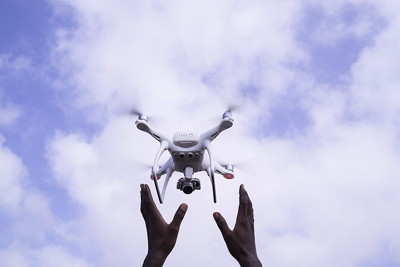
The Civil Aviation Authority of the United Kingdom is responsible for setting out the laws that apply to any devices or vehicles that wish to take to the skies in the UK. It’s clear from a quick look on any buy-a-gift style site that paying for helicopter tours over empty stadiums is a possibility, so flying in such a manner obviously isn’t against the law. However, that doesn’t mean that people can just do it willy-nilly and without the necessary licences being sorted ahead of time.
Obviously in this day and age the main way that the majority of people can fly over buildings such as football stadiums is with the use of a drone. These small unmanned aircraft can be bought for less than £100 and more than £1000s, so it’s no surprise that the CAA is working hard to come up with official rules and regulations on their use. Anyone flying one needs to be aware of the rules and regulations surrounding the devices, with commercial use of drones being subject to further laws.
Operators are required to apply to the CAA for permission to fly aircraft in certain areas, with buildings being one of them. If you’re flying a drone then it needs to be in your direct line of sight at all times, which is for the specific purpose of ensuring that it is unlikely to collide with anything that it might do damage to. DJI is a maker of drones and also offers a service whereby you can type in the location of the area you’re hoping to fly and it will let yo know whether it is a No Fly Zone or not.
The Risk To Football Fans
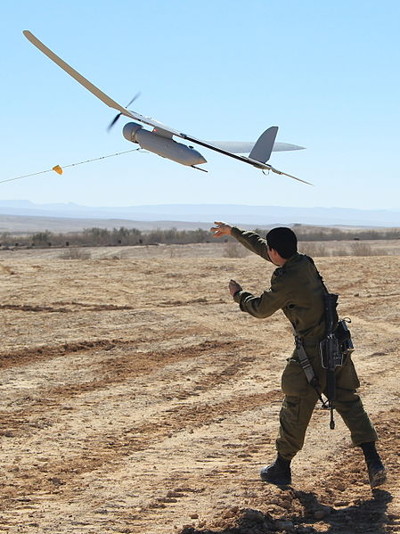
The use of drones to fly over football stadiums that are full of supporters is one that poses a serious risk, according to the Football Safety Officers Association. They are not against the use of drones in their entirety. Some farmers use them to keep an eye on their cattle, police officers use them to track criminals and Amazon have been in negotiations in order to use them to deliver parcels, so it’s not as if the use of such devices is only a bad thing.
Yet for the FSOA there are a number of factors that need to be considered. For starters, in order to fly a drone over a football stadium when a match is ongoing a user would almost certainly have to be out of the line of sight of the vehicle. That leaves it open to all sorts of issues, not the least of which is the possibility of losing control of the drone due to weather or because it has crashed into something like the stadium itself. Such a thing could do extreme damage to players or supporters.
There is also an increasing fear that drones could be used for terrorist activity, with one of the authors of the Oxford Research Group’s Remote Control project declaring that the machines could be ‘a game changer in the wrong hands’. Given that drones have become a part of military life, it’s little wonder that a fear over their use by terrorists to carry poisonous gases or explosives into a full football stadium has become a real concern. The use of CCTV and communication between police and the Civil Aviation Authority is the only way of limiting the threat at present.
Flying Banners Over Grounds
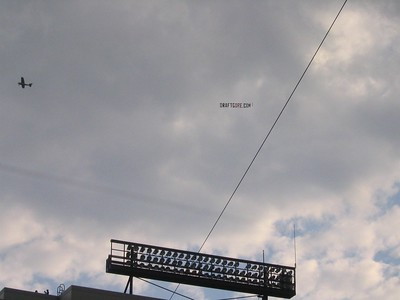
There might well be some rules and regulations about flying a drone over a stadium or hovering a helicopter over one in order to watch the match taking place below, but what about flying banners with messages on them?
The idea hit the news in 2014 when a group of Manchester United supporters funded a plane to fly over Old Trafford during the club’s game against Aston Villa towing a banner behind it with the message ‘Wrong One – Moyes Out‘.
The reason it’s possible to do it is that the skies over a stadium in certain areas are not No Fly Zones. One such example is Headlingley in Leeds, where some matches took place during the International Cricket Council World Cup in 2019 and bore witness to politically charged messages on banners being flown over the ground.
That means that there is no legal basis for stopping people from flying things over stadiums in certain parts of the country. The difference, of course, comes in the fact that they are flying over as opposed to hovering in order to capture images of the matches taking place.
Examples Of People Falling Foul Of The Law
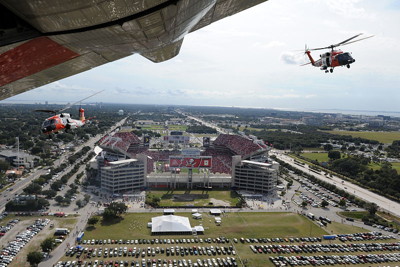 The conversation around flying things over grounds, with a specific focus on drones, made it into the headlines in 2015 when a man named Nigel Wilson was fined for flying his drone over a number of different football stadiums as well as various London landmarks.
The conversation around flying things over grounds, with a specific focus on drones, made it into the headlines in 2015 when a man named Nigel Wilson was fined for flying his drone over a number of different football stadiums as well as various London landmarks.
The Nottinghamshire resident was accused of seventeen breeches of the Air Navigation Order, though in the end a number of the charges were dropped as there was insignificant evidence.
The areas that he was accused over flying over as well as the events taking place at the time were as follows:
- Anfield during the Liverpool v Ludogrets Champions League match
- The iPro Stadium during the Derby County v Reading Championship match
- The Emirates Stadium during the Arsenal v Tottenham Hotspur Premier League match
- The Etihad Stadium during the Manchester City v Tottenham Hotspur Premier League match
- The Palace of Westminster
- Buckingham Palace and the north bank of the Thames during the Queen Victoria Memorial
It was felt by the judge that Wilson had ‘put the public at risk‘ by flying his drones in a built-up area at a time when he couldn’t maintain visual contact with the device. The judge declared it to be ‘the height of arrogance in terms of public safety’. He used three different unmanned aircraft in order to shoot the videos, which he then uploaded to his YouTube channel.
The law states that unmanned surveillance aircraft are not allowed to be flown within 150 metres of a congested area, nor within 150 metres of an organised event that features an open-air assembly of in excess of one thousand people. That’s why the laws that apply to planes carrying banners are different to those for drones and therefore it is illegal to fly over a stadium filled with people but not one that is empty.
In 2018 a League One match between Doncaster Rovers and Wimbledon was suspended after a drone was seeing flying over Keepmoat Stadium. The referee informed the managers that they were not allowed to have play taking place whilst a drone was overhead. Though no one was arrested for the flying of the drone in this instance, it perhaps demonstrates the increase in drone activity around football matches.
